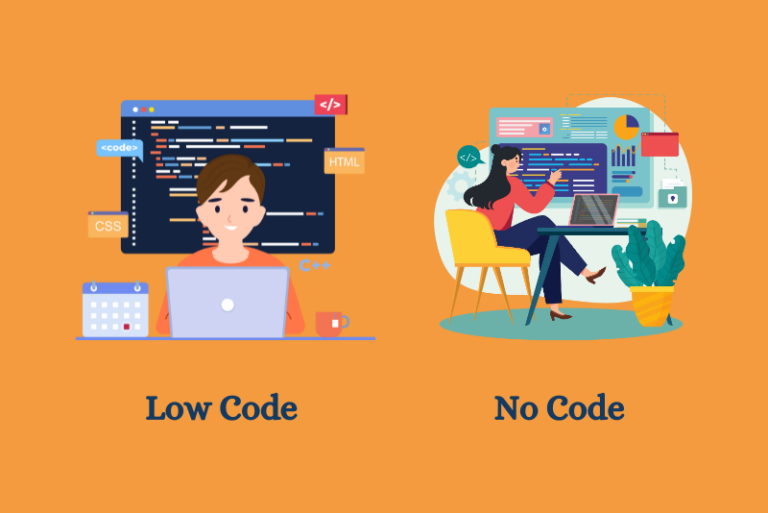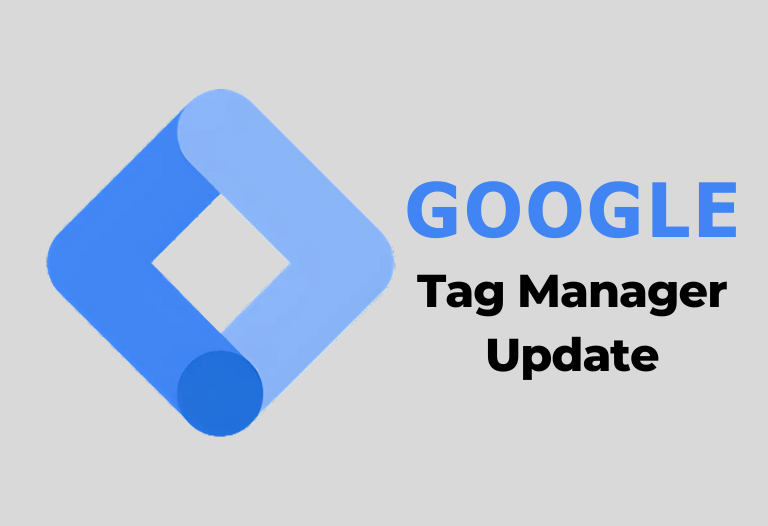
Generally, the IT units of any technological solution company are under tremendous pressure to develop and deploy software applications as per the end-user’s expectations. In these situations, new development projects are either put on hold or delayed because of a shortage of skilled resources and a backlog of operation and maintenance work. That is where low-code and no-code platforms simplify, speed up, and advance the application development process.
Low-code, no-code platforms are changing how software apps are made, enabling people with minimal coding knowledge to create and launch applications. This method redirects focus from developing apps to assembly and integration to meet the increasing demand for software solutions and reduce the need for qualified developers.
LCNC platforms, often delivered as Platform-as-a-Service (PaaS) solutions, provide intuitive visual interfaces and pre-configured templates to simplify development. This paradigm shift offers numerous advantages and adopting the right development platform can transform your business and invite clients to explore your solutions.
Overview of Low-Code and No-Code Platforms
Historically, Rapid Application Development (RAD) and Visual Basic are considered the earliest low-code integrated development environments (IDE). They were launched in the late 1990s and early 2000s as a fourth-generation programming language and fast application development platforms.
However, a significant advancement was made after the development of spreadsheets. These spreadsheets are a non-procedural, non-algorithmic approach to computation that has become immensely popular. They enable a whole generation of businesses to use computers efficiently without knowledge of programming.
What is Low-Code?
Low-code development platforms offer a simplified approach to building applications. They allow users with little coding knowledge to create software using visual interfaces and pre-built components. While some coding may be required for customization, low-code platforms streamline development by reducing the need to write code from scratch.
What is No-Code?
No-code platforms are designed for users with no coding experience, enabling them to build applications using visual tools and drag-and-drop interfaces. No-code eliminates the need for traditional coding, making application development accessible to a broader range of users
Key Features and Impact of Low-Code No-Code Platforms
Software is developed to address business problems: internal IT teams are losing ground to business teams who can no longer wait months for a server to be provisional when they can go to the cloud with a credit card.
Note that these Low-Code/No-Code (LCNC) frameworks are based on established programming languages like Python, Java, and PHP. These frameworks provide users with a simplified interface that allows them to drag and drop features to build, test, and deploy applications without directly writing or understanding code in those underlying languages.
This approach focuses on ease of use, making the complex processes of coding and deployment more accessible to non-technical users while still relying on robust programming languages in the background for functionality and scalability. LCNC platforms offer simplicity while leveraging the power of traditional coding languages to create and launch applications efficiently.
Many businesses prioritize digital transformation by democratizing technology and empowering individuals to create software applications without extensive coding knowledge. This allows business users and developers to focus on their expertise, reducing friction. The resultant accessibility to app development leads to increased agility, reduced costs, and improved customer experiences.
What can be Built with Low-Code Development Platforms
Customer Experience Apps: Through LCNC, we can build apps that customers expect to be ‘easy to use’ and ‘well-functioning,’ enabling self-service and customer interaction. Examples include mobile banking apps, retail shopping apps, and customer support portals.
Productivity Apps: LCNC platforms can help organizations enhance operational efficiencies and cut costs by automating processes, streamlining workflows, and minimizing manual tasks. Examples include apps for managing tasks, project management tools, and automated data entry systems.
Employee Management Apps: Low-code platforms can create apps for centralized schedule management, payroll and benefits administration, and workplace communications. Examples include employee onboarding portals, time-tracking systems, and performance management dashboards.
Line of Business Applications: Low-code platforms enable the updating and transfer of obsolete apps and streamline process automation for certain business sections or divisions. Some instances are customer relationship management systems, applications for managing supply chains, and tools for automating marketing.
Employee Engagement Apps: These tools can assist in gauging team involvement, monitoring employee contentment, and obtaining information to enhance the office atmosphere. Some instances are employee feedback surveys and recognition and rewards platforms.
Website and Mobile App Development: Low-code platforms enable the creation of websites and mobile applications with varying levels of complexity.
Integration with External Plugins and Cloud-Based Technologies: Low-code platforms enable the creation of applications that can connect with external add-ons and cloud-based tools like machine learning libraries and robotic process automation.
Advantages and Disadvantages of Low-Code No-Code
Low-code/No-Code platforms offer businesses both significant benefits and certain limitations. Despite their ability to speed up growth and enable non-experts, they also have limitations in customization, scalability, and performance, which restricts their applicability to specific scenarios.
Advantages of Low-Code/No-Code
Rapid Development and Launch Cycle: Optimizing LCNC platforms creates applications faster without extensive coding.
Reduced Development Costs: LCNC development reduces reliance on specialized developers, leading to lower costs associated with hiring and training developers.
Increased Accessibility: Pre-built components and cloud-based solutions enable non-technical users (Citizen Developers) to build applications without coding knowledge.
Enhanced Collaboration: LCNC enables citizen developers to contribute their expertise and abilities through involvement in app creation. This allows business units to create tailor-made solutions, encouraging collaboration and creativity among technical and non-technical teams.
Improved Customer Experience: Companies can create easy-to-use applications that improve customer interaction. Low-code platforms typically have pre-designed UI templates that guarantee a uniform and efficient user experience on different devices and touchpoints.
Disadvantages of Low-Code No-Code Platforms
Reduced Flexibility: LCNC platforms may limit the ability to customize compared to conventional coding techniques. Strict frameworks and restricted access to source code may prevent companies from developing extremely customized or intricate applications.
Security Risk Concerns: Depending on third-party LCNC platforms could make businesses vulnerable to security risks if the provider is breached or stops services. Protecting applications and data necessitates thoughtful consideration and evaluation of security measures.
Performance Considerations: LCNC platforms have some customization limitations, which may not always offer the same efficient performance as custom-coded applications in highly complex scenarios.
Scalability Issues: Scalability problems may arise in LCNC applications because of constraints in adjusting underlying infrastructure or merging with existing systems. As applications expand, scalability challenges can arise from inflexible templates and reliance on vendors.
Best Low Code No Code Development Platforms
LCNC platforms have been transforming application development, enabling tailored software solutions with minimal coding skills. Here is a list of platforms that provide a graphical interface and ready-made parts, making the development process more efficient and cutting up the time to launch an application product.
|
Low-Code Development Platforms |
No-Code Development Platforms |
| Microsoft PowerApps | Airtable |
| Zoho Creator | Google AppSheet |
| Mendix | Nintex |
| Flutter-Flow | Bubble |
| Salesforce Lightning | Zapier |
| Appian | Kissflow |
|
Amazon’s Quicksight and Honeycode |
Guiding Principles for Building Apps Using LCNC Platforms
Clearly Define Needs and Desired Outcomes: Before beginning construction, comprehend your objectives. As an illustration. What issue must this customer-facing application address if you are working on it? Who is the intended user? What is required for it to operate?
Focus on Business Processes and Workflows: Utilize the BPM tools on the LCNC platform to detail and record the processes and workflows your application will streamline or assist. This frequently requires breaking the application into modules and constructing them as separate units that can be combined.
Leverage Visual Tools: The LCNC platform provides a visual development interface. Use the drag-and-drop interfaces, pre-made components, and visual modeling tools to create and assemble your application.
Prioritize Configurability over Customization: Whenever possible, aim to configure the platform’s existing features to meet your needs rather than resorting to extensive custom coding. This approach promotes maintainability, reduces development time, and aligns with the principles of LCNC development.
Test Thoroughly and Iterate: Testing is crucial in any development process, and LCNC is no exception. Test your application thoroughly at each stage of development and be prepared to iterate based on feedback and testing results.
Collaborate Effectively: Efficient teamwork is crucial, particularly in group projects. LCNC platforms’ visual aspect enables business users, citizen developers, and IT professionals to communicate and collaborate effectively.
Consider Scalability and Security: While LCNC platforms can offer speed and efficiency, consider the potential scalability and security challenges. Choose platforms with a strong security track record and assess your application’s long-term growth and evolution.
By following these guiding principles, you can optimize the advantages of LCNC platforms and develop successful, productive, and easy-to-use applications. Remember that your approach might change based on the platform and complexity of your application.
Future of LCNC Development
LCNC platforms’ future looks promising, with significant growth and adoption projected across industries. According to Gartner and Forrester, by 2025, 70% of new applications will leverage these technologies, which is nearly triple of what it was in 2020. LCNC platforms meet the increasing demand for rapid development and deployment, empowering citizen developers to contribute to creating digital solutions alongside traditional developers. This collaboration will optimize the development process and enable businesses to innovate more efficiently.
Despite their advantages, LCNC applications often need more scalability due to architectural constraints and integration challenges with legacy systems. Future platforms are expected to address these concerns by incorporating features like open APIs and microservices support, allowing for better scalability and seamless integration.
Security and governance are critical factors in LCNC development. As these platforms gain popularity, addressing vulnerabilities and the risk of shadow IT is essential. Future LCNC platforms will likely offer enhanced security and governance features to ensure safe and compliant application development.
As LCNC platforms expand further, they are becoming crucial in software development. Continued enhancements in scalability, security, and integration will further strengthen their influence in shaping the future of digital innovation. By adhering to optimal methods, companies can maximize the benefits of LCNC to adjust and succeed in the constantly changing digital environment.
Conclusion
To sum up, LCNC platforms are set to become essential tools in the upcoming software development landscape. The expected expansion and continuous improvement of features that boost scalability, security, and integration indicate that LCNC will keep evolving, enabling businesses to innovate and adjust to the constantly changing digital environment.
By adopting the core principles for designing and constructing these systems, companies can leverage LCNC’s revolutionary potential and speed up their digital transformation efforts.
Is Your Company Prepared for the Digital Transformation
Throughout the blog, we’ve defined how important LCNC-developed apps are for various purposes. To accelerate your development process, join Primotech’s Low-Code No-Code expert team. We’ll build high-performance applications tailored to your business goals. Bring your Ideas to Life efficiently and affordably. Reach out to us, and let’s plan a collaboration for your next project.




 October 22, 2024
October 22, 2024











